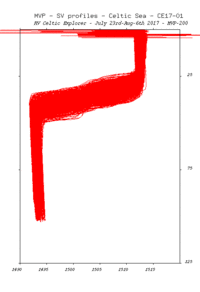

direct comparison - EK60 multi-frequency scattering section v. continuous MVP profiling
| back to: Report Index |
MVP
Sound Speed Data RV Celtic Explorer Cruise CE17-01 Chief Scientist: Kevin Sheehan, MI July 22nd to August 6th 2017 |
John E. Hughes Clarke Anand Hiroji Jose Cordero Ros Center for Coastal and Ocean Mapping University of New Hampshire |
 |